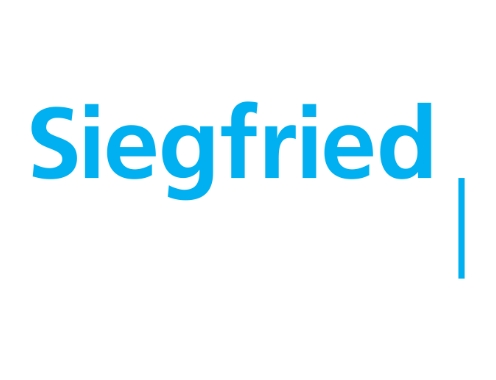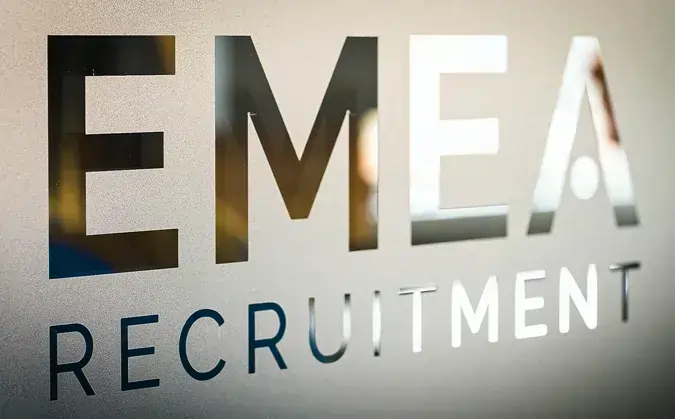Pieter Vogels - Global Head of HR (Vice President) at Siegfried


Pieter Vogels is the Global Head of HR (Vice President) for pharmaceuticals manufacturer, Siegfried. He is responsible for the global Drug Product cluster, covering 1,800 employees at sites across Switzerland, Germany, Spain, Malta and the US. Pieter began his Human Resources career at Nyrstar and has since worked for RUAG and Dow Inc.
Your LinkedIn shows a dual degree in Software Engineering and HR. What made you choose that combination?
I’ve always been fascinated by technology and how it can drive innovation – in the way we live, work, and connect with the rest of the world. It ignites creativity and expands the boundaries of what people believe is achievable – and its potential is limitless. Process design and digital transformation were key elements of my studies.
That said, I also wanted a people-centric focus and to have an impact on individuals. The best thing about leadership and change management is getting the best out of people and technology – creating a dynamic environment in which they can thrive.
How have the two worlds come together throughout your career?
Now and in past roles, I’ve been involved in HR digital transformation through process re-design, or by implementing everything from individual tools to full system suites. As an HR Business Partner, I would advise on digital transformation within the function and how we could develop people within current or new roles.
By understanding the business needs and culture, I’m better able to identify technology improvements and translate the company’s needs into HR policy. This type of collaboration not only enhances efficiency and data accuracy, it enables HR professionals to focus on strategic initiatives while leveraging technology to support workforce management.
If we want to be successful and have a continued partnership with the business, it’s essential that HR understands the vision of the company and the overall strategy. Where technology plays a key role in improving customer satisfaction, our competitive advantage is ultimately going to be our people.
You mentioned that HR must understand a company’s vision. What does vision mean to you?
To me, it’s an inspiring picture of the future you want to create. It serves as guidance, providing purpose and direction, shaping aspirations and actions towards achieving meaningful goals. A compelling vision outlines where we want to go but also motivates and connects employees in a shared journey of growth and success.
That’s why a company vision is so important. It gives meaning to all the initiatives within that enterprise. If a project or strategies can’t be aligned with the overarching vision, you have to ask yourself, “will this add value?”. “Do we need to reconsider?”
Our global workforce is becoming more critical, questioning companies’ purpose, how they add value and why things are the way they are. I think this is a healthy development, and the capability for critical thinking we find within our talent should be used for continuous reflection and improvement.
I ask our leaders to hire for attitude and train for skills. Knowing our ‘why’ and being able to explain it is key. If you can’t do this as a leader, how can you expect people to come with you? This requires a clear HR strategy and roadmap that supports leaders to address the employees’ questions and expectations. In future, leaders will be held much more accountable for the execution of our overall strategy execution, not just for delivering monthly KPIs.
How do you translate a vision into an HR strategy?
You need to start by thoroughly reviewing the business strategy and identifying what HR can bring to it. From there, you can derive the strategic pillars of an HR strategy, formulate it in simple terms and then check in with senior leaders to ensure it will meet their needs.
Next, you have to define and connect the company’s strategic projects with the HR and business strategy – to ensure one will help to achieve the other.
Next, it’s time to allocate your resources and critically review the HR Target Operating Model (TOM). What will best support the implementation of the HR strategy throughout each project? The maturity of HRIS will likely play a role, however, as part of the HR strategy, HRIS is surely identified. The Target Operating Model should be defined at the end state, so as part of the strategy implementation, TOM changes are considered.
Once an HR department has that foundation in place, you’re in a strong position to appoint people and finalise the HR roadmap as a team, with high-level milestones running until the end of the current strategy path.
Finally, you need to identify key stakeholders and create a communication plan. Continuation and follow-up should be half-yearly, with a major review at least every two years. And at every stage, three things are of the essence: communication, communication, and communication!
What’s most essential for creating a successful HR strategy?
It has to be getting the leadership’s buy-in. As an HR function, we support employees and leaders with processes that drive performance and cultural change. Without their support, HR won’t be as effective, or earn the mandate to execute its strategy. So we have to make sure that everything we do and everything we strive for aligns with organisational goals – again, it’s “why do we do what we do?”
Continuous communication is also key to demonstrating progress and added value within an HR strategy – whether you’re reaching out to stakeholders within or outside of the organisation.
Finally, you need to measure your progress – to better see where and how you can improve. Engagement is a great measurable indicator of the evolution of company culture, leadership capabilities and general employment satisfaction. Lagging indicators such as sickness or staff turnover can also help narrow down areas for improvement.
What impact do you think AI will have on HR?
In general, AI will enable HR departments to automate transactional work. If you let AI learn about your internal policies, handbooks, regulations and code of conduct, it can play a powerful role in quickly answering questions from employees and managers.
AI is usually much faster than sending an email and waiting for the answer, and typically people who seek HR support want a quick response – so it’s a huge opportunity. We can also use it to standardise job descriptions and adverts, and over time, learn the company’s corporate language.
The disadvantage is the lack of emotional connection. The way AI writes is very homogenous, transactional and business-like – which is OK for some communications, but lacks authenticity when it comes to sharing recognition and praise.
If you tell an employee, “hey, job well done”, but you can't tell them why, then it's not meaningful to them – and that’s where you need to be very careful. That’s where people have the upper hand – because they can convey messages with specificity and human emotion.
Thank you to Pieter for speaking to Keely Straw, who manages our Human Resources recruitment team in Switzerland.
Views and opinions contained within our Executive Interviews are those of the interviewee and not views shared by EMEA Recruitment.






You can also use your social account to sign in. First you need to:
Accept Terms & Conditions And Privacy Policy